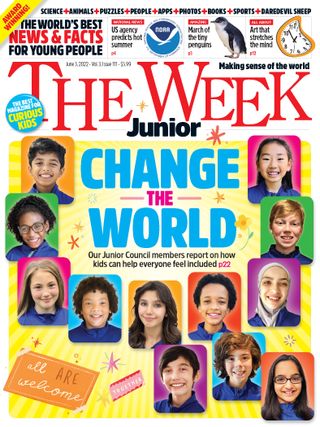The Week Junior is a weekly news magazine that focuses on current events but filtered for readers between 8 and 14 years old.
That makes this unique as the only publication for children of that age that covers weekly news including science, nature, tech, and culture. It does all that with the goal of fostering the love of reading in children while also working directly with kids and empowering them to understand the facts behind what is happening in the world.
The magazine works with guiding principles that include Respect, Clarity, Balance, Trust, and Accuracy.
In the words of Editor-In-Chief Andrea Barbalich: “Children are aware of what's happening in the world, possibly more so than they’ve been given credit for in the past. This generation is informed, engaged, and involved. Many children have told us, ‘We want to know what the adults know.'"
So how can this work in education?
What is The Week Junior?
The Week Junior is a magazine publication aimed at 8 to 14 year old readers that covers news, science, tech, nature, and culture on a weekly basis. It is available in print form, giving children a chance to read current events without the need for more screen time.

In a government study it was found that 83% of kids found it important to learn about the world around them while 75% believed their actions could make the world a better place. Since Gen Alpha also said that access to education is a top issue (along with protecting the planet and ensuring everyone is fed), the content in The Week Junior is more relevant now than ever before.
The magazine is available both as a companion to kids while also working as a partner for parents and educators helping those children to learn and grow. While this is all in print, there is also a digital side that allows for engagement from readers, but more on that below.
How does The Week Junior work?
The Week Junior is a subscription-based magazine that is released on a weekly basis.
It is a great non-fiction source, which is appealing for teachers who find it hard to find a non-fiction source that kids will enjoy reading.

Like any other magazine, everything is laid out clearly and, in this case, beautifully, with vibrant colors, rich imagery, and well-spaced text. All that makes for an easy-to-read magazine that is appealing to younger children, helping them learn magazine layouts and setting them up for other news-reading options in the future.
Everything is sectionalized so readers can jump to the parts they want or work their way through. Puzzle sections allow let kids to get involved and test their learning skills. Plus, there is the email section in which kids can make contact and even see their own words, potentially, in print in the next edition of the magazine.
What are the best The Week Junior features?
The Week Junior reports on current events in a safe and trusted way for children. The magazine gets students talking about events happening in the world, and provides them with facts that help develop their own opinions.

The big story, usually on page two, is the most complex, so it is followed by a series of questions and answers to help make it more easily digestible. Smaller stories follow with local U.S. news, which is then accompanied by features such as the Word of the Week to build vocabulary.
Silliest Headlines is another nice section that adds brevity and humor to the reading and aims to make reading enjoyable for kids.
The image-led Around The World section is great for learning from 10 short stories that are dotted about a world map. Children learn about what's happening in the world while also discovering or reinforcing their understanding of where those places are.
The Big Debate is a superb section that encourages opinion and sharing with green and orange boxes to show points for the two sides, in which readers can then vote and get involved.
Other sections include the arts, how to, quiz of the week, and more, all designed to keep children coming back throughout the week to this valuable educational tool.
Another great feature is the weekly teacher guide. It's a free, easy-to-use lesson plan developed by educators that help teachers plan each week (since the magazine is current events, they will not know what will be featured until the magazine arrives that week).
How much does The Week Junior cost?
Educators can request a free sample magazine to review with your faculty and administrators, visit theweekjunior.com/schoolsample.
Educators can subscribe for their classrooms for just $1.29 per copy, a savings of more than 78% off the single copy price of $5.99 (includes access to both the Print & Digital edition). Also included is a weekly Teacher Guide to help you get the most out of each issue. Subscriptions are flexible, teachers can subscribe for a semester or the full school year.
The Week Junior offers classroom bulk subscriptions that are delivered directly to schools. Magazines arrive fresh-off-the-press every Monday.
The Week Junior best tips and tricks
Get quizzical
At the end of each issue is a quiz that can be used by teachers to check reading comprehension and see how well students are integrating what they're reading.
Review
Pick an article to review and discuss in the class once it's been read. See who has an opinion and who needs more encouragement to join in.
Extend
Use the magazine's lesson extension ideas to seek out more from beyond the magazine to add more depth to what the students have already read.

